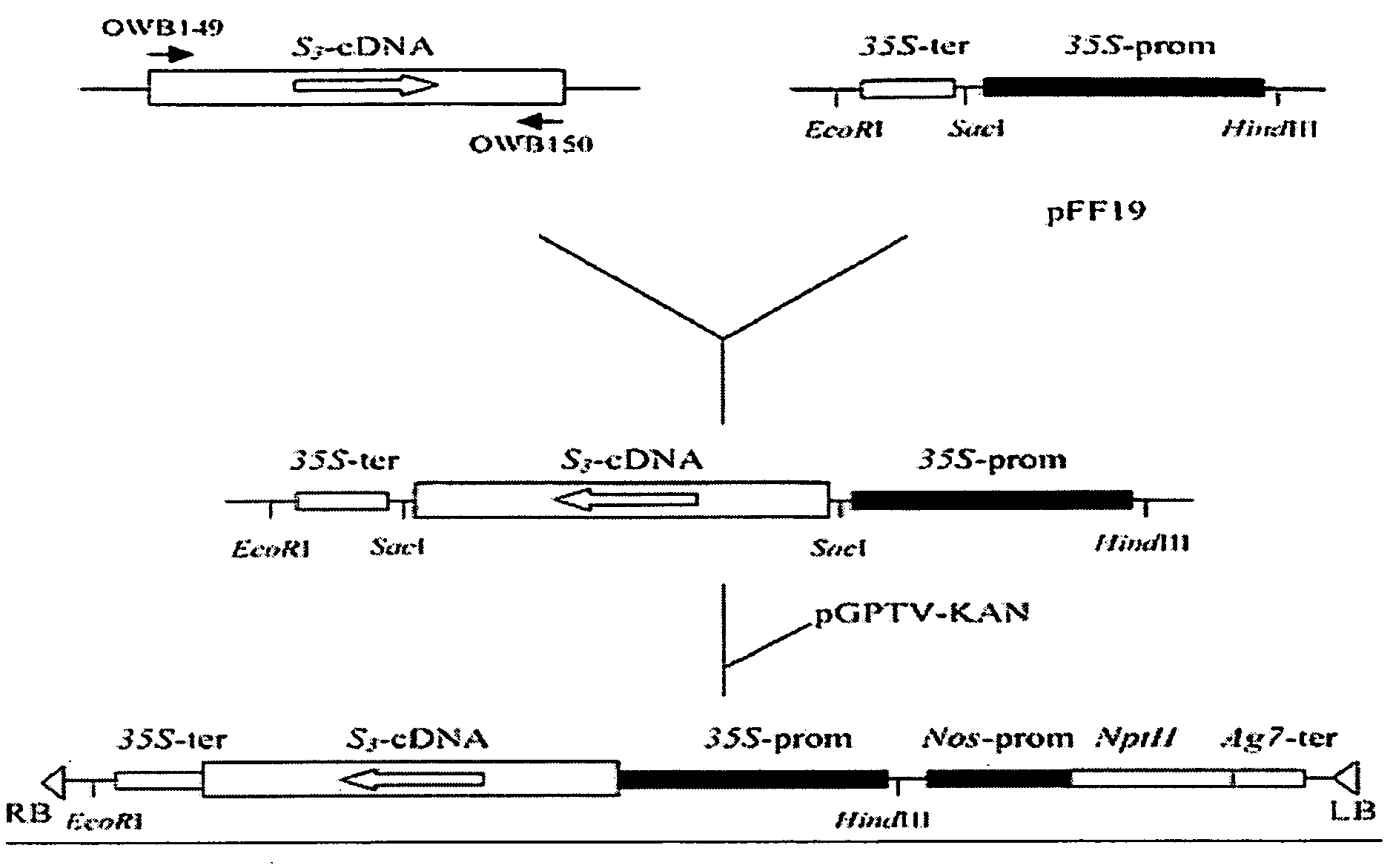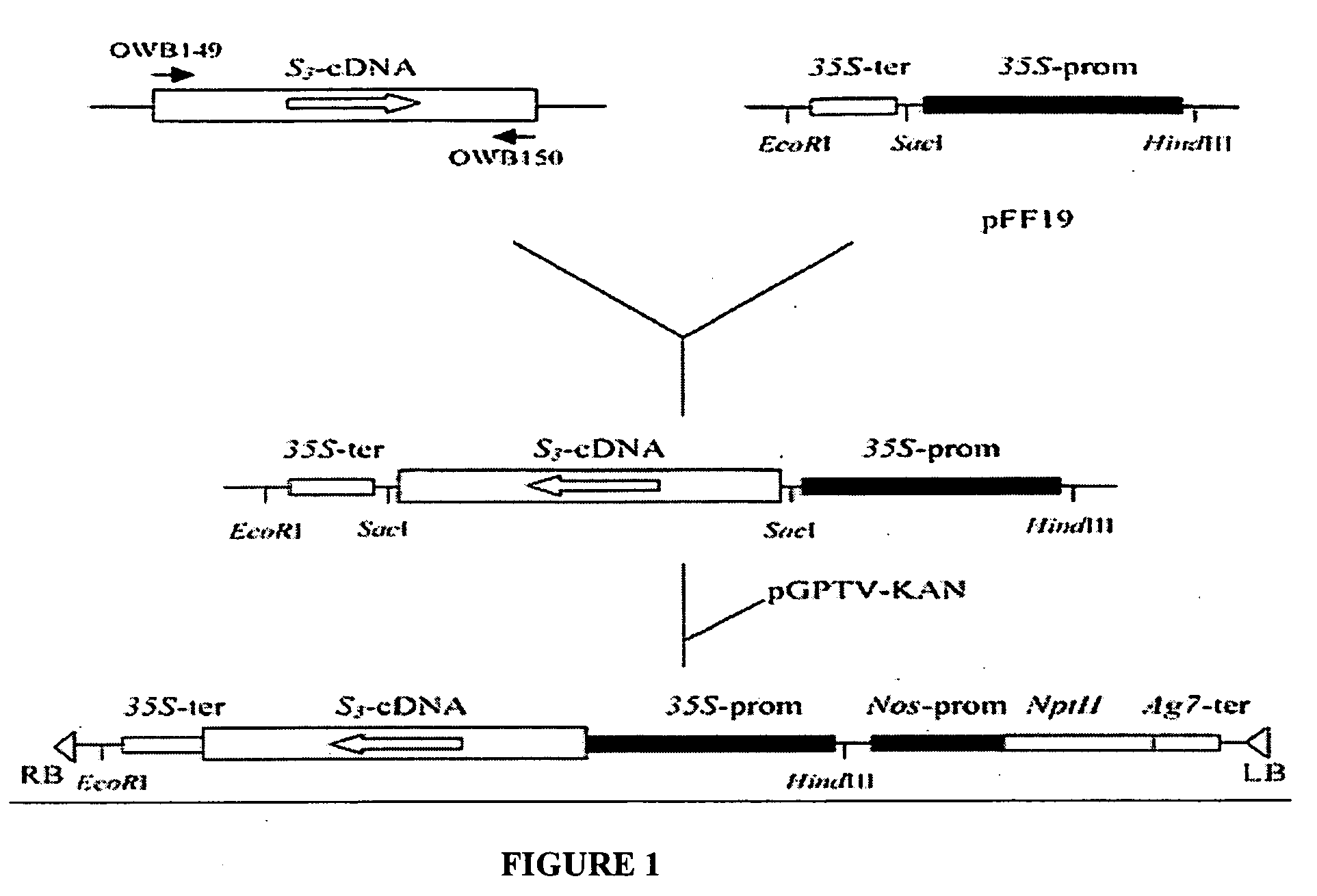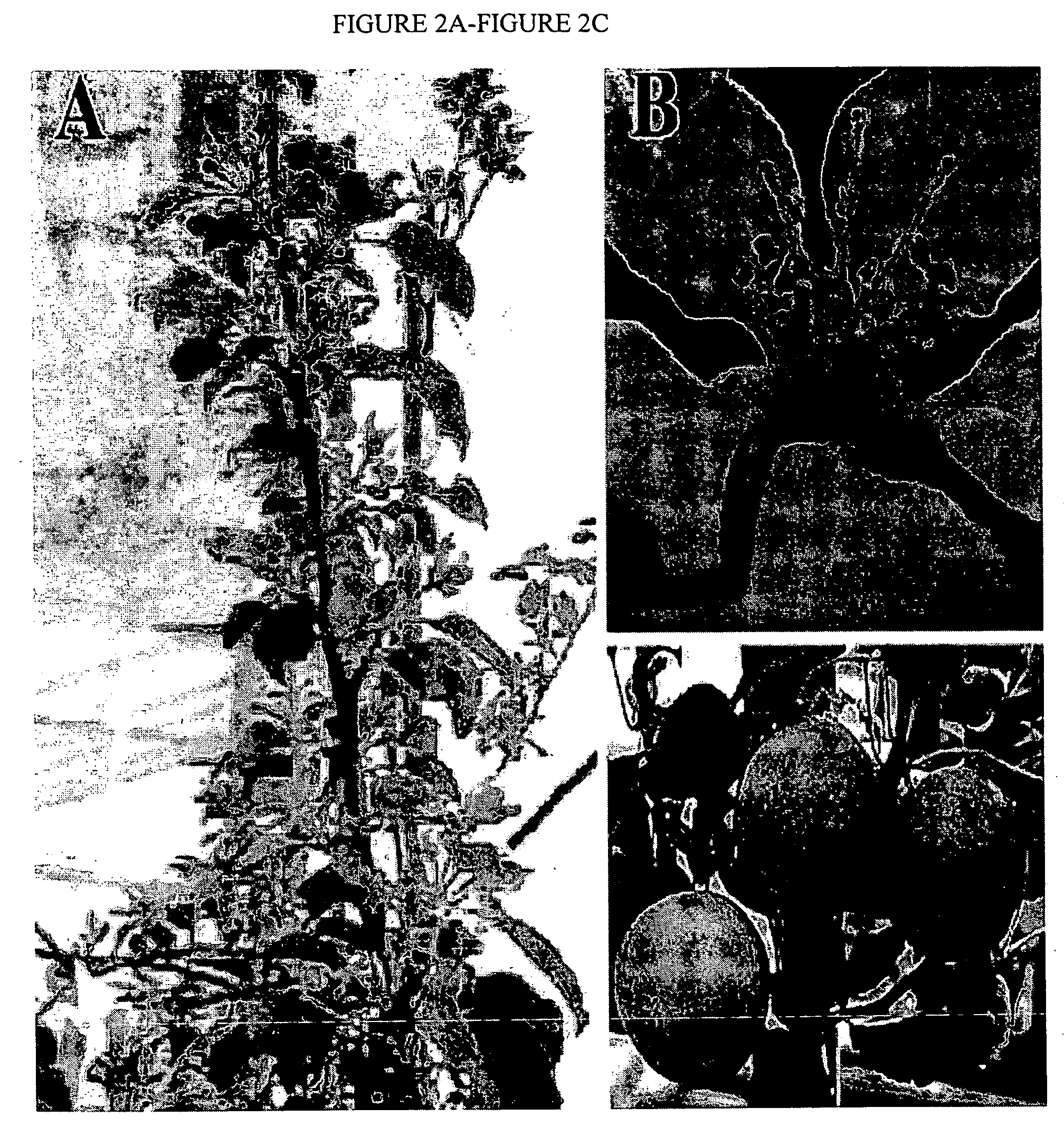Self-fertile apple resulting from S-RNAase gene silencing
a technology of s-rnaase and gene silencing, applied in the field of production of transgenic apple plants, can solve the problems of impaired activity of commercial inability to produce true self-fertile apple cultivars
- Summary
- Abstract
- Description
- Claims
- Application Information
AI Technical Summary
Benefits of technology
Problems solved by technology
Method used
Image
Examples
example 1
Materials and Methods
Construction of the Binary Vector
[0047] The S-gene silencing construct was derived from the S3 cDNA obtained from a style cDNA library (Broothaerts et al. 1995). PCR was used to amplify the coding sequence from the cloned S3 cDNA from start to stop codon, using primers OWB149 (50-TCTCTAGAGCTCTTGAACAAACATTATTC-30) and OWB 150 (50-ACTCTAGATGAGCTCTTAATACTG-30). After verifying the amplified product by cloning and sequence analysis, the fragment was ligated in a sense orientation into the SacI site of pFF19, between the enhanced 35S promoter and terminator sequences of cauliflower mosaic virus (CaMV) (Timmermans et al. 1991). The resulting chimaeric expression cassette was subsequently ligated into the HindIII / EcoRI restriction sites of binary vector pGPTVKAN (Becker et al. 1992), containing the nptII expression cassette near the left T-DNA border, in the opposite direction to the p35S::S3 gene cassette. The recombinant binary vector was electroporated into Agrob...
example 2
Production of Transgenic Apple Plants Bearing a Sense S3-Allele Construct
[0051] The apple variety ‘Elstar’ displays a strong SI response, as reflected by the low fruit and seed set following selfing. ‘Elstar’ bearing the alleles S3 and S5, and cDNAs for both S-alleles have been cloned (Broothaerts et al. 1995; Janssens et al. 1995). S3 is by far the most common S-allele within the domesticated apple species and the presence of its gene product in the pistil has been confirmed by in situ immuno-localization studies, applying an S3-peptide-specific antibody (Certal et al. 1999). Based on the S3 cDNA, a co-suppression construct was prepared for the transformation of ‘Elstar’. This constrict contained the full-length sense S3 cDNA sequence driven by the double CaMV 35S promoter and is shown in FIG. 1. From 1,500 in vitro leaf explants co-cultivated with A. tumefaciens, 13 independent transgenic plants were produced. These lines were shown to contain an intact S-transgene and nptII gene...
example 3
Controlled Pollination Tests
[0052] Plants from transgenic lines 81 and 102 were grown to maturity in the greenhouse and a are shown in FIG. 2A. These plants were shown to bear normal fertile flowers and are shown in FIG. 2B. As shown in FIG. 2B the normal fertile flowers have anthers (with pollen grains) and five styles composing the pistil. These plants were analyzed for SI by hand-pollination. Some of the flowers were self-pollinated (using pollen from control ‘Elstar’ trees), and some were cross-pollinated with a compatible pollen donor variety (Delbard Jubil, bearing the S-alleles S2 and S22; Broothaerts 2003). This experiment was repeated during the following 2 years and the results are summarized in Table 1 below.
TABLE 1YearPollinationLine 81Line 102Control1999Cross8(97)22(58)24(762)Self5(161)19(63)4(1,068)2000Cross40(287)29(266)51(620)Self47(346)26(331)6(688)2001Cross24(80)16(112)21(1,035)Self24(86)5(123)2(1,002)1999-2001Cross31(464)25(436)30(2,417)Self32(593)20(547)4(2,75...
PUM
| Property | Measurement | Unit |
|---|---|---|
| Compatibility | aaaaa | aaaaa |
Abstract
Description
Claims
Application Information
 Login to View More
Login to View More - R&D
- Intellectual Property
- Life Sciences
- Materials
- Tech Scout
- Unparalleled Data Quality
- Higher Quality Content
- 60% Fewer Hallucinations
Browse by: Latest US Patents, China's latest patents, Technical Efficacy Thesaurus, Application Domain, Technology Topic, Popular Technical Reports.
© 2025 PatSnap. All rights reserved.Legal|Privacy policy|Modern Slavery Act Transparency Statement|Sitemap|About US| Contact US: help@patsnap.com



